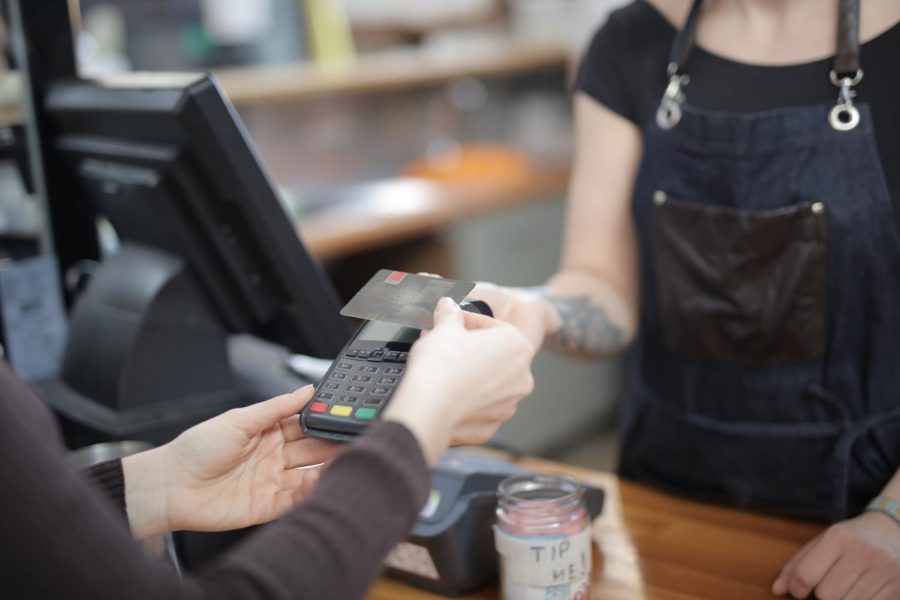Eliminating cash transactions poses problem for homeless
Photo courtesy of Andrea Piacquadio on Pexels.
Some businesses have opted to go paperless to prevent the spread of COVID-19 – but it harms some, like the homeless.
October 26, 2020
The pandemic has greatly impacted the way that we use paper money.
In hopes of slowing the spread of the coronavirus, more signs are popping up in businesses that require customers to pay debit, credit or even contactless payment.
The Centers for Disease Control and Prevention encourages touchless payment because it reduces the amount of time that is spent face to face with another person, thus limiting the risk of COVID-19 transmission.
Many companies are making the decision to ditch paper currency purchases and it has taken time for consumers to adjust to this reality as well. But how has this limitation affected the most vulnerable populations, such as the homeless?
In order for an individual to pay a service that does not offer paper currency, they must have a bank card, which many homeless people do not have.
Most homeless people rely on cash to pay for food or transportation. The reduction of this tangible currency being accepted has dramatically affected their ways of living.
Personally, I think that businesses should at least provide the option of paying with cash or card because it shows inclusiveness to everyone, whether they are rich, poor or middle class.
Despite the pandemic and wanting to be cautious, exposure to paper currency should be the least of our worries.
Social distancing, wearing a mask and making a conscious effort to wash your hands with soap and water is more important to protect yourself and others from spreading COVID-19, than through limiting paper money, coins and even our bank cards.
This should be the real healthy habit that we all can practice integrating even more: not taking away the option of paper currency or suggesting to pay with a card.
Going cashless has affected working-class individuals and the non-working class at a micro level, but how is it influencing other countries at a macro level?
In countries like China, the push for digital currency is moving at a much quicker rate.
The People’s Bank of China has a plan in place to implement digital yuan, or Digital Currency Electronic Payment, a cryptocurrency that could change the way people make daily transactions.
This system ultimately would provide quick and easy payment methods by replacing currency while still being able to access a bank account. It would also reduce bank costs and the everyday hassle of paper currency.
The pandemic has officially paved a way for the distinction of paper currency. Whether digital currency will be implemented more in the future or not, coins and the combination of fabric and paper might one day be just an artifact in a museum.








Lisa Carmosino • Nov 9, 2020 at 10:17 am
Identity-first vs. person-first language is an important distinction to make, as it is both socially acceptable and politically correct language to know when referring to someone or a group of people with a condition as a descriptor, such as “the homeless” Constructions such as that are called “identity-first” language, as opposed to “person-first” language where the person literally comes first: “individuals experiencing homelessness”. “People First Language” (PFL) puts the person before the disability, and describes what a person or group has (or doesn’t have, in this case), not who they are, i.e., homeless. PFL uses phrases such as “person with a disability,” “individuals with disabilities,” and “children with disabilities,” as opposed to phrases that identify people based solely on their disability, such as “the disabled.”